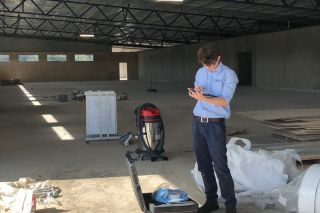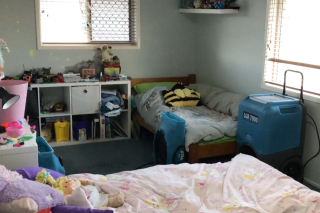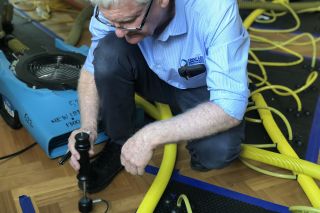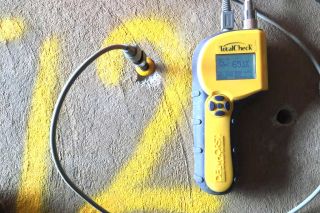Timber floor restoration
There are situations where replacing affected floorboards is not cost effective. This is especially true when coming across hardwood timber flooring, as it can be quite costly to replace. It is in these situations where restoration of the original floorboards to an acceptable level is very valuable. In this case, we were called to dry swollen hardwood timber flooring to an upper level of a house.
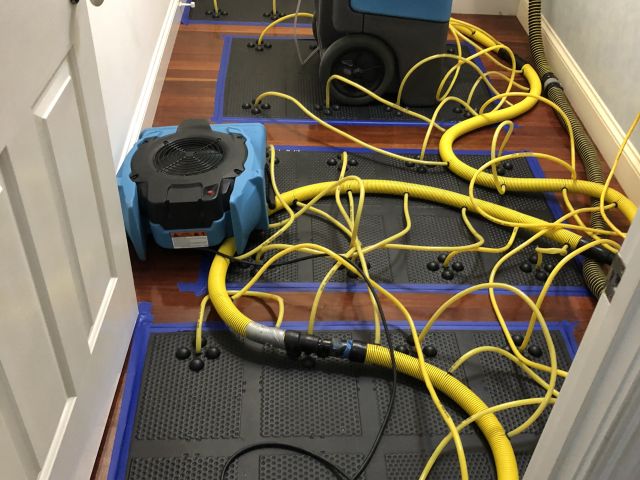
#Project Highlights
$20,000
Saved as a result of the project due to restorative timber drying works
1x
Injectidry system installed
9x
Injectidry mats installed
Desiccant
dehumidication used due to cold temperatures
#Damage Caused
Due to a washing machine hose leak, water had penetrated the floorboards, and caused swelling. The following elements were affected as a result of the water ingress:
Jarrah timber floorboards
Plywood Subfloor
Timber Joists
Garage ceiling plaster
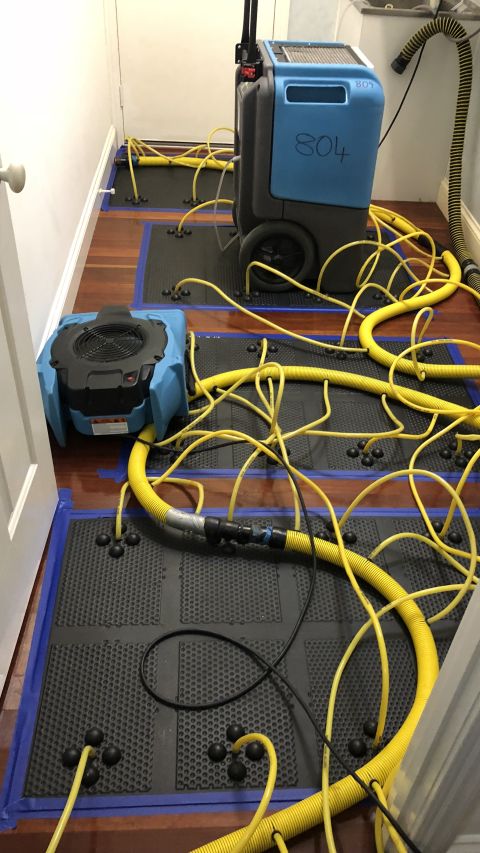
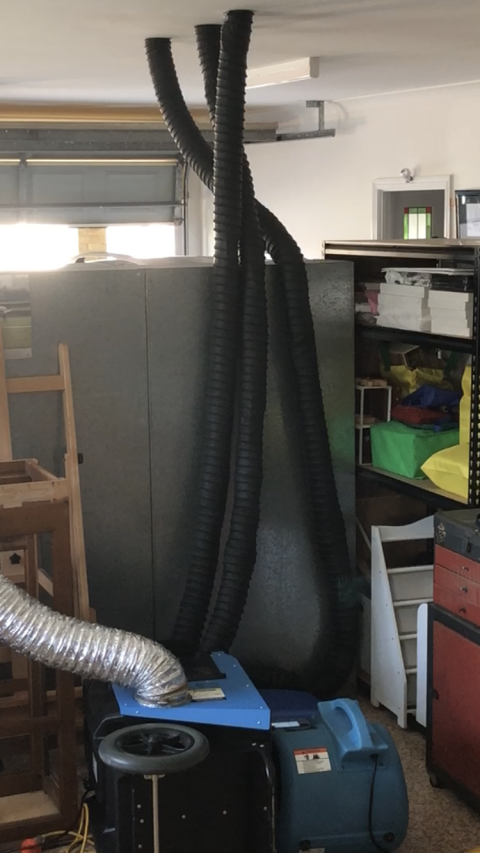
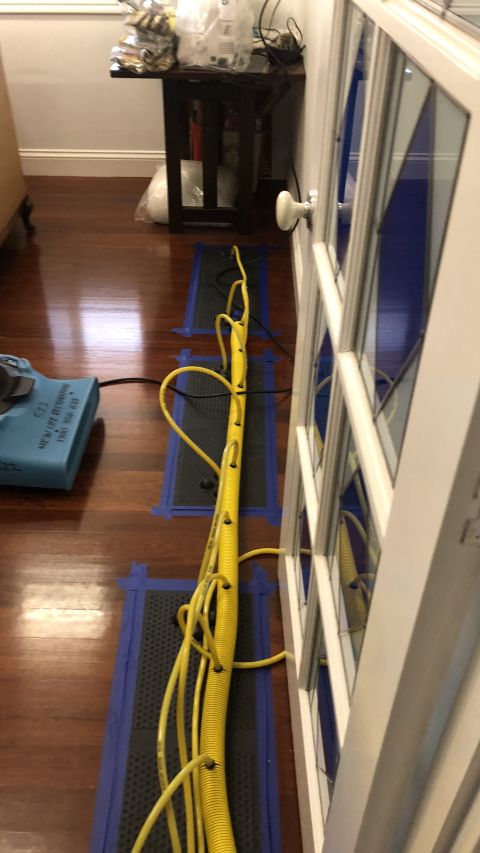
#Drying timber floor boards
Economical Restoration
The floorboards in this house were secret nailed jarrah timber installed on a plywood subfloor. These were installed through out the 4 bedroom home on the upper level. It became quickly apparent that a replacement was out of the question. It then became imperative that the boards were restored.
Timber Floorboard Drying
With the use of our injectidry system and mats, we created a negative pressured air environment under the floorboards. The water was then removed through evaporation in the mats and ejected out a wet air waste hose which was then picked up by the dehumidifer left in the room. The result of this closed drying system was an effective removal of moisture from the timber over the course of a week period.
Plywood Subfloor Drying
To dry the plywood underneath, we drilled 3 invasive 100 mm holes to the garage ceiling plaster directly underneath the source room, and pushed up dry heated air with the use of a desiccant, heater, airmover and 100 mm ducting. Due to the average ambient temperature of the garage, a desiccant was used due to it's ability to perform at better efficiency at a lower temperature than a Low Grain Refrigerant (LGR) dehumidifier. Each of the three holes were placed in between joists to insure maximum air flow coverage.
#The Result
As a result of the above processes, the timber floorboards were brought to an acceptable moisture content level (set by the Australian Timber Floorboard Association). The floorboards were left to acclimate to the environment a month before sanding. This process saved the insurance company up to $20,000 in floorboard replacement costs, and kept disruption to a minimum for the insured.
